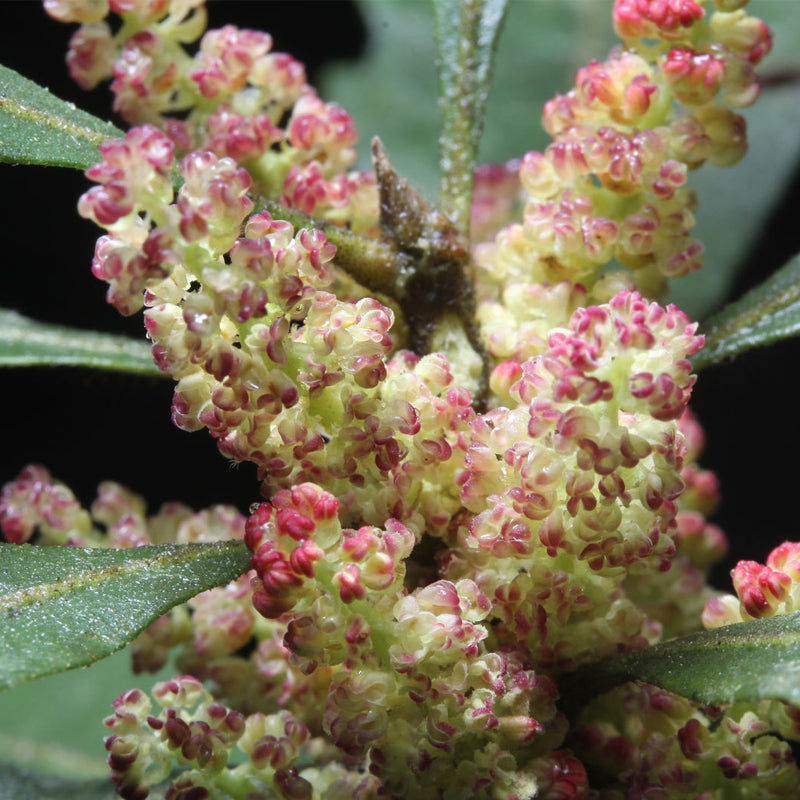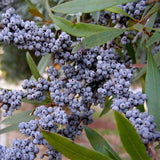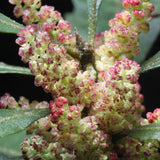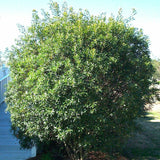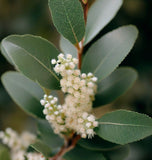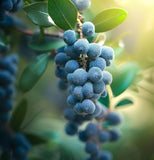Myrica cerifera (Southern Waxmyrtle)
Myrica cerifera (Southern Waxmyrtle) is a species of flowering plant in the family Myricaceae. It is native to the southeastern United States, including coastal areas from Texas to Florida and up the Atlantic coast to Delaware.
Appearance: Southern Waxmyrtle is a medium-sized evergreen shrub or small tree that can reach heights of up to 30 feet (9 meters). It has a dense, rounded crown with multiple trunks. The leaves are simple, leathery, and aromatic when crushed. They are oblong to lance-shaped, measuring about 1 to 4 inches (2.5 to 10 cm) in length.
Bark: The bark of Myrica cerifera is smooth and gray when young, but as the plant matures, it becomes rough and fissured.
Flowers: The species is dioecious, meaning that individual plants produce either male or female flowers. The flowers are small, inconspicuous, and yellow-green in color. They appear in elongated clusters known as catkins, which are produced in late winter or early spring.
Fruits: Female plants produce small, waxy berries that are bluish-gray in color. These berries are a characteristic feature of the species and persist on the plant throughout the year, providing a food source for wildlife.
Landscaping and uses: Myrica cerifera is commonly used in landscaping and restoration projects due to its adaptability and wildlife benefits. It can be utilized as a hedge or screen plant and is also suitable for erosion control along water bodies. Additionally, its fragrant foliage and attractive berries make it a popular choice in garden settings.
Botanical Name : Myrica cerifera
Common Name : Southern Waxmyrtle
Height : 20- 25 ft
Spread : 15 ft
Germination Info : Seed requires 21 days cold moist stratification, and scarification prior to sowing
Hardiness zone : 7-10
Other info : This plant fixes atmospheric nitrogen.
Average seed per ounce : Approx. 2500



